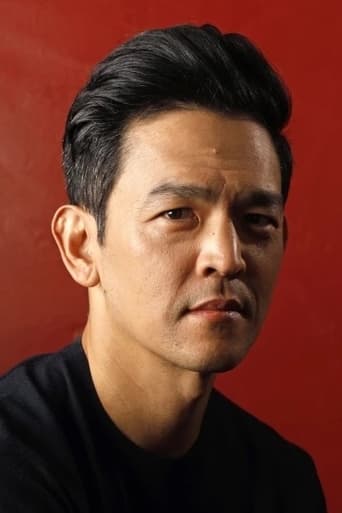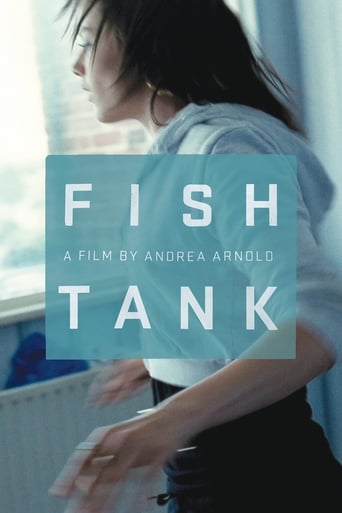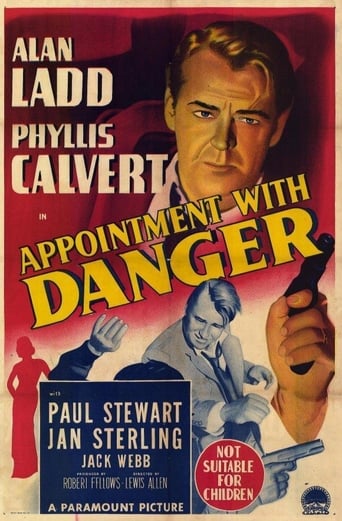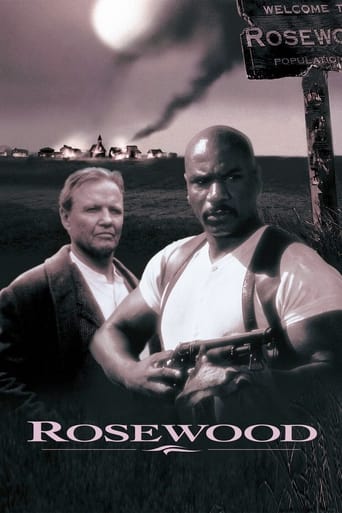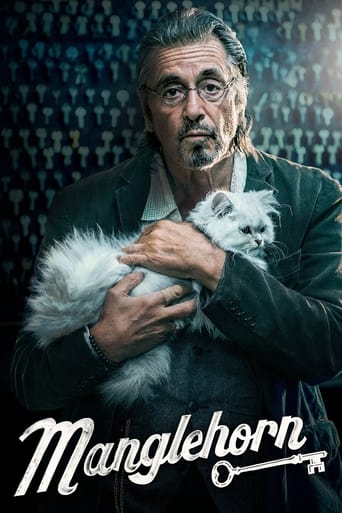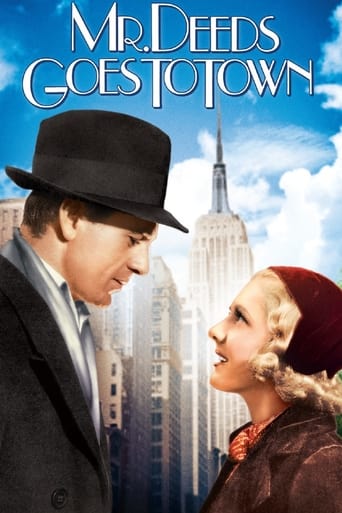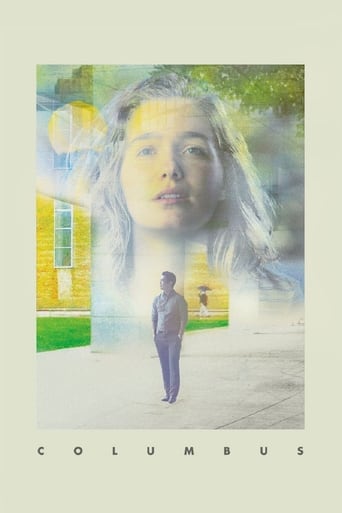
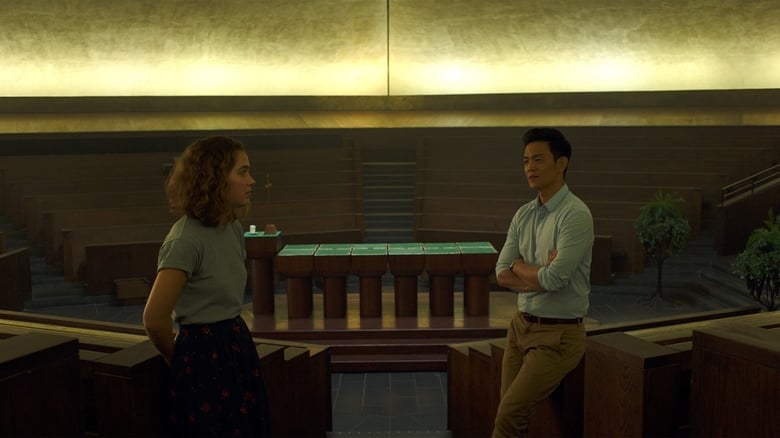
Columbus (2017)
When a renowned architecture scholar falls suddenly ill during a speaking tour, his son Jin finds himself stranded in Columbus, Indiana - a small Midwestern city celebrated for its many significant modernist buildings. Jin strikes up a friendship with Casey, a young architecture enthusiast who works at the local library.
Watch Trailer
Cast


Similar titles
Reviews
This was the worst movie I have seen by far. Boring, pointless, inane conversation between boring people with generous periods of absolute deafening silence. This is one of those movies directed to intellectuals that refer to "movies" as "films" and like to use expressions like "paradigm shift" whilst rubbing their chin. I would have given this a "0" if it was allowed ... what a mess.
These are the films I love to watch ones with great actors and great cinematography and so so so so much symbolism. I love the scene in particular when they are talking outside the building and when what seems like a important part of the conversation it turns to silence and we see them talking but don't hear what they are saying which I believe is symbolic for one of the ideas of their relationship which is everything even the little things can be left up to your own interpretation. That's just one of many in this film.
The quiet indie drama "Columbus" won't win over many mainstream moviegoers, but cinema academic-turned-filmmaker Kogonada has crafted a visually immaculate feature debut that can be compared to little else.As artistically distinctive as the film may be, the story will feel familiar: A man named Jin (John Cho) ends up in the rural town of Columbus, Indiana when his father goes into a coma and meets a young woman named Casey (Haley Lu Richardson) unable to uproot herself from this modern architecture mecca. Their collision of perspectives as they tour her favorite buildings and learn about each other's challenges and hopes makes up the reflective heart of the narrative.Yet there's a third obvious character in this story and that's Columbus. Not its people or culture, but its structures. Kogonada makes the presence of this setting palpable in most every shot. As we follow Jin and Casey from location to location, even the ones not designed by skilled architects, we're given time to absorb their surroundings, which may make us feel something that influences our perspective on the story. As the characters take in these thoughtfully designed structures, so do we. Imagine watching a play in an art museum - that's the best way to describe the dual artistic nature of "Columbus."The choices Kogonada and cinematographer Elisha Christian make with the camera and lighting prove to be everything in this film. The calculation, symmetry and blocking show a meticulous amount of thought, detail and planning. Every shot is its own portrait, as though the film is a 100-minute contemporary art exhibition. Some portraits will move you more than others. Plus, there's the additional layer of how that portrait influences not just the viewer's perception, but the story unfolding. Kogonada doesn't care much for plot specifics, and to a degree that fences us off from these characters because we can only invest so deeply in their personal conflicts, but the portraits of Jin and especially Casey are extensive enough that we have plenty to observe and react to in the film. Richardson's performance stands out the most in the way she continues to wrestle with her guarded nature and self-prescribed future and begins to lose a grip on her emotional control.Foremost, "Columbus" is a reflective viewing experience. With almost no film score, we're not meant to get enthralled by the film so much as bring our attention to it and experience it in this visual, contemplative way. It requires an appreciation for the craft of creating a frame to be sure, but it's good enough that it might make some new film appreciation "students" out of more casual indie film fans.~Steven CThanks for reading! Visit Movie Muse Reviews for more
You couldn't shoot this movie in any other town. What first time director Kogonada finds in Columbus is a simple thesis; modernist architecture, by the likes of designers such as Eero Saarinen, Harry Weese, and I.M. Pei, their great planes of glass, jutting edges and spires, sharp dividing lines, and the lonely citizens that are framed by them, their lives impossibly tangled, their pathways weaving in and out of these pillars. For Casey, one of the sleepy town's youngest inhabitants (that has the freedom to leave), they may be her small consolation prize. She works in one of the fabled buildings, the Cleo Rogers Memorial Library, but spends most of that time shelving dusty books instead of gazing at the ceilings. Her first scene betrays her passion, a smoke-break turned daydream as she mumbles out imaginary tour guide sound bites across from the First Christian Church, teasing out the intricacies of its deliberate asymmetrical design. Yet these sleek walls and panels have little appeal when they reveal their contents; a heartbreaking scene where Casey surveys the glass interiors like a prison made for her mother, a recovered drug addict who cleans all night long. If you study her wardrobe you'll notice key design choices made to indicate Casey as an old soul, matured much beyond the confines of the titular town. Baggy mum jeans, loose-fitting blouses, long dresses bunched around her sandals. Yes, she's the responsible parent of the family, chasing up her daughter's missed phone calls, charging up to school with a firm reminder of her pick-up time. There's a slightly off-kilter moment where she declares her allegiance to old technology, "Smart phone, dumb human." Haley Lu Richardson delivers much of her dialogue gazing off-screen, with a wistful smile that doesn't quite reach her eyes. The mood in the Columbus air is melancholy. That draws John Cho's Jin closer, who can't wait to get out of town. Together they excavate the baggage of their difficult parent relationships, with conversations that tiptoe lightly around the subject, but withdraw quickly. Cho in particular does well with what he is given. His father only briefly graces the screen in the opening of the film, with Jin's actions made to outline the rough sketches of their strained relationship; a slight hesitant step before entering the hospital room, a retreat from the suffocating confines of modern living to nature outside. Even without knowing much about the man behind the mysterious pseudonym, you could pinpoint his favoured sources of inspiration. But we don't have to dig too deep. For those invested in the video essay scene, Kogonada will be a familiar face, known for years for his Vimeo-uploaded super-cuts exhibiting the immaculate centred frames of Kubrick, the flattened, scrapbook formalism of Wes Anderson, Ozu's penchant for boxing in his subjects with doorways and windows and walls. It's all there in Columbus, which embraces austere formalism like an old friend. If it wasn't already obvious enough, the director's alias is seemingly taken from Kogo Noda, Ozu's longtime scriptwriter collaborator. Kogonada has written and edited here, and he might as well be the DP too; the film's tableus are constructed from ground up, with the characters arranged around the architecture and dictated by the strong lines, not the other way around. While they weave in and out, and trudge to and from mirrors and showers, the camera is still. They'll be obscured behind glass, or heard from behind a corner, or framed through a corridor. Even strolling through an office, the line of desks are arrow straight, and the sticky notes are placed impeccably. Rarely does Kogonada cut to a closeup. When he does for what should be the most revealing moment of the film, where Jin presses Casey for what truly moves her about these buildings, it's merely to resort to a disappointing indie cliché - deigetic sound cuts out, and she confesses wordlessly over soft music. I should be feeling more for this girl. She veers a little into cliché, but there's a worldly weariness about her that separates from the usual archetype. Richardson's ability to sudden crumble under the weight of all her anxieties, seen in another muted moment in the car, is extraordinary. She suddenly reverts to the child that had to see her mother as an addict at fourteen. Yet her overall journey is so isolated from the rest of the plot. She weeps on behalf of her mother, who doesn't even get a say in this decision. And what of her and Jin's tumultuous relationship? They're willing to aim barbed insults at each other and then be cordial the next meeting. He doesn't even eventually get the chance to shed tears, or muse on the lack of them.


